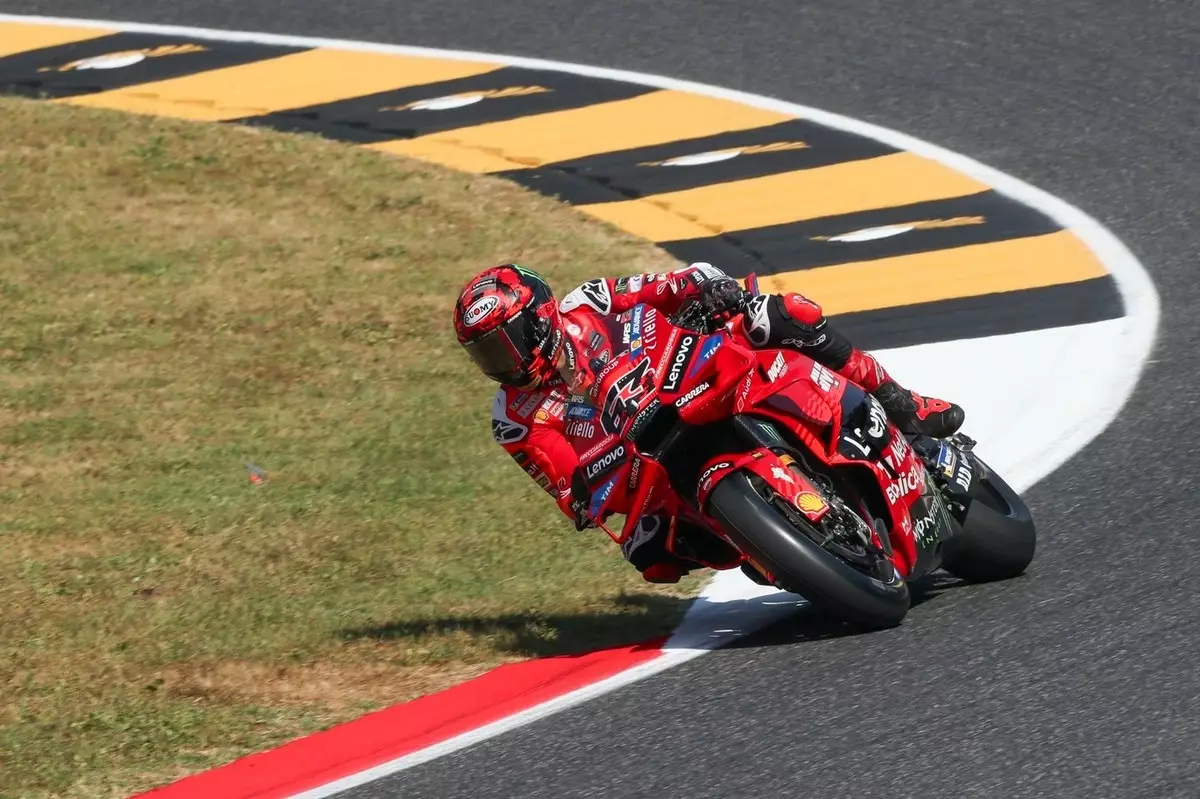In the fast-paced world of MotoGP racing, where every millisecond counts, the importance of an optimized braking system cannot be overstated. While the excitement typically revolves around engine power and aerodynamic designs, much of a bike’s performance hinges on the subtleties of its brake design. The recent discussions around Francesco Bagnaia’s shift to a larger brake disc during the Aragon Grand Prix have illuminated just how pivotal braking configurations can be. However, while larger brake discs may seem like a straightforward upgrade, they introduce a complex web of challenges and considerations that teams must navigate.
Brembo’s Insights on Brake Dynamics
Andrea Pellegrini from Brembo provides a compelling perspective on the intricate dynamics of brake performance. Although the initial adoption of a 355mm disc improved Bagnaia’s feeling of control, the Aragon circuit demands a unique approach due to its high energy requirements. Starting with a 340mm disc, Bagnaia opted for the larger size during warm-up, responding to the needs of the specific track. However, planning for Mugello, where Braking requires a different strategy entirely, underscores the necessity of tailored brake solutions that account for varying circuit characteristics.
Mugello’s layout, which is lighter in energy demands compared to Aragon, raises questions about weight and balance. As Pellegrini notes, moving to a 355mm disc at this venue isn’t purely about size; it introduces significant weight concerns, particularly with the additional covering necessary to reach optimal operating temperatures. Each decision must be meticulously calculated to maintain the bike’s agility without compromising braking efficacy.
The Temperature Management Challenge
Temperature control in MotoGP is vital, and Pellegrini highlights how the brake disc size influences temperature management. A larger disc, while offering increased stopping power, complicates thermal regulation. If the brake system operates below the necessary temperature, riders will suffer from diminished braking capability, which can severely hinder performance. Thus, the need for extra covers—to keep larger discs adequately heated—adds weight and can alter handling characteristics. This balance between braking power and overall bike performance is a testament to the engineering prowess required in elite motorcycle racing.
What complicates matters is the ongoing evolution of tire technology and how it interacts with braking systems. As tires continue to improve in both grip and thermal management, the potential for exploiting different brake configurations will only increase. It’s a continuous loop of feedback between riders, engineers, and tire manufacturers that shapes the competitive landscape.
Strategizing Brake Configurations for Success
Racers must answer critical questions: How much braking power is necessary? Is the trade-off in weight worthwhile? The answer is not uniform across all tracks; it’s a game of specific strategies tailored to each circuit’s demands. The approach to braking will inevitably influence how competitive a team can be, making the dialogue around brake specifications not just technical jargon, but a cornerstone of race strategy.
As discussions around larger brake discs, weight considerations, and temperature control continue to develop, it’s clear that the ongoing evolution of braking technology will serve as a critical focal point in future races. Teams that excel will be those that not only adapt to these technological shifts but also embrace them as key elements of their performance narrative. This nuance in braking technology may very well dictate the outcome of races, underscoring its significance far beyond mere mechanical adjustments.

